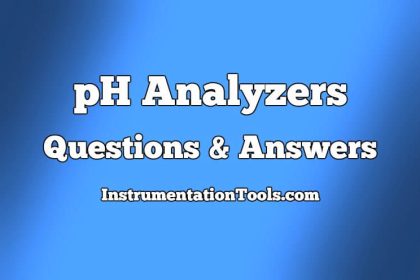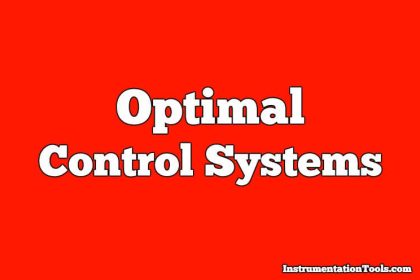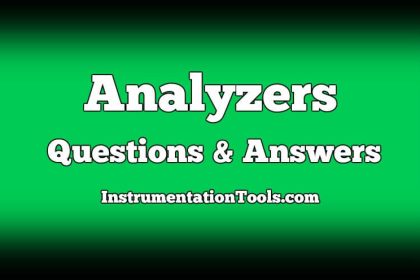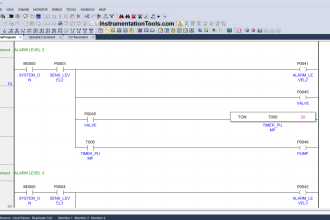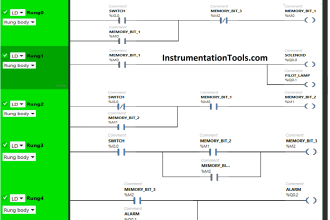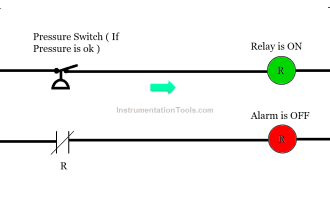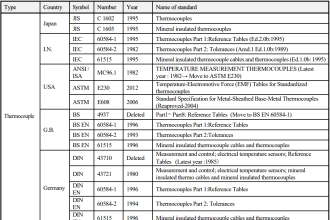Root Locus Concepts Objective Questions
1. Which one of the following statements is not correct?
a) Root loci can be used for analyzing stability and transient performance
b) Root loci provide insight into system stability and performance
c) Shape of the root locus gives idea of type of controller needed to meet design specification
d) Root locus can be used to handle more than one variable at a time
Answer: d
Explanation: For more than one variable state space is used.
2. Root locus of s(s+2)+K(s+4) =0 is a circle. What are the coordinates of the center of this circle?
a) -2,0
b) -3,0
c) -4,0
d) -5,0
Answer: c
Explanation: s(s+2)+K(s+4) =0
1+K(s+4)/s(s+2) =0.
G(s)H(s) =K(s+b)/s(s+a)
Centre =(-b,0) =(-4,0).
3. The main objective of drawing root locus plot is :
a) To obtain a clear picture about the open loop poles and zeroes of the system
b) To obtain a clear picture about the transient response of feedback system for various values of open loop gain K
c) To determine sufficient condition for the value of ‘K’ that will make the feedback system unstable
d) Both b and c
Answer: d
Explanation: The main objective of drawing root locus plot is to obtain a clear picture about the transient response of feedback system for various values of open loop gain K and to determine sufficient condition for the value of ‘K’ that will make the feedback system unstable.
4. While increasing the value of gain K, the system becomes
a) Less stable
b) More stable
c) Unstable
d) Absolute stable
Answer: a
Explanation: Damping factor is inversely proportional to gain on increasing gain it reduces hence makes the system less stable.
5. The addition of open loop poles pulls the root locus towards:
a) The right and system becomes unstable
b) Imaginary axis and system becomes marginally stable
c) The left and system becomes unstable
d) The right and system becomes unstable
Answer: d
Explanation: The addition of open loop poles pulls the root locus towards the right and system becomes unstable.
6. Root locus is used to calculate:
a) Marginal stability
b) Absolute stability
c) Conditional stability
d) Relative stability
Answer: d
Explanation: Root locus is used to calculate relative stability.
7. Routh Hurwitz criterion is better than root locus.
a) True
b) False
Answer: b
Explanation: Root locus is better as it require less computation process.
8. Consider the following statements regarding root loci:
a) All root loci start from the respective poles of G(s) H(s)
b) All root loci end at the respective zeros of G(s) H(s) or go to infinity
c) The root loci are symmetrical about the imaginary axis of the s-plane
d) All root loci start and end from the respective poles of G(s) H(s) or go to infinity
Answer: b
Explanation: All the root locus start at respective poles and end at zeroes.
9. Number of roots of characteristic equation is equal to the number of ______________
a) Branches
b) Root
c) Stem
d) Poles
Answer: a
Explanation: Number of roots of characteristic equation is equal to the number of branches.
10. Which of the following statements are correct?
a) Root locus is for the negative feedback systems
b) Complementary root locus is for the positive feedback systems
c) Root locus is for the negative feedback and Complementary root locus is for the positive feedback systems
d) Complementary root locus is for the negative feedback systems
Answer: c
Explanation: Root locus and Complementary root locus are complementary to each other.
